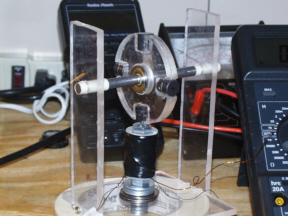 |
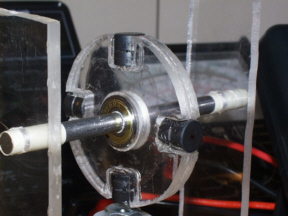 |
| 3 inch rotor, 2- 1/4" pieces |
Magnets were not strong enough 1st time |
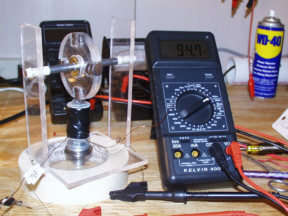 |
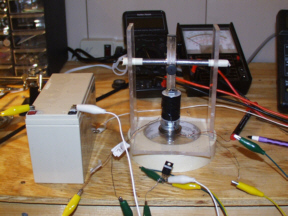 |
| |
|
 |
 |
Pic#4- This is the failed
first rotor. As you can see, I made the rotor from a plastic
wheel and 2 bearings epoxied in place. The
magnets were too weak. I was not sure just how strong the
magnets had to be, so it was pretty much trial and error. I
thought that the coil was too weak and even rewound them 3
times. I was sure it was
the coils since I got good repulsion when connecting the
coils directly to the battery (like an electromagnet). Further
checking
with my oscilloscope showed that the transistor was NOT
switching, so I had 2 choices, I could either add more turns
to the coil or add stronger magnets. I first added about a
hundred more turns to the
coil. This added some additional voltage, but not nearly enough
to make that silicon transistor switch. So, I took another
look at the magnets. This was the missing piece of the puzzle.
The magnets were from Radio Shack, and were not even close to
giving the amount of voltage required to switch the transistor
on and off. Increasing
the number of turns on the coil produced more power, but still
not enough. The solution was to build a new rotor with
stronger magnets. Radio Shack magnets were still not strong
enough on the new rotor, so I added small Neodymium Iron Boron
magnets to the stack, thus producing the required transistor
junction voltage |
Pic#5- The 1/2"
Radio Shack ceramic magnet stack on the new rotor, with the addition of
the rare earth magnets now epoxied in place.
|
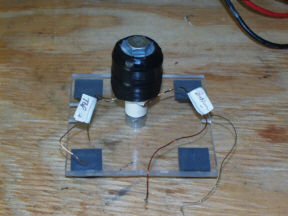 |
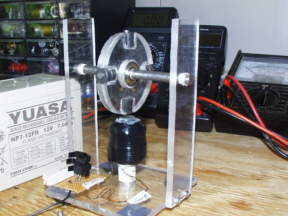 |
Pic#6- This is the coil
assembly. It consists of power coil and pickup coil, wound all
one direction in a bifilar fashion. The power
coil is 23 gauge magnet wire and the pickup coil is 26 gauge
magnet wire. Once again, standard Radio Shack parts. Coils wound
on a 3/8" bolt 2 1/2" long. Then mounted on
plexiglass frame. The white item under the coil is a standoff
made from pvc pipe, in this case it was required to bring the coil
closer to the rotor. |
Pic#7- This is the
completed motor ready to run.
|
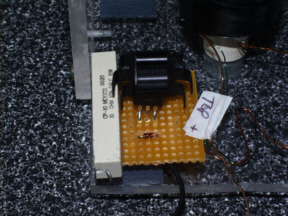 |
|
Pic#8- This is the
controller circuit. It consists of a Radio Shack
TIP-3055 Part #276-2020, a 1N914 diode, and I am using a 10 watt- 10 Ohm
resistor for testing. Of course I will try many different resistor
values, voltages, and transistors; but for now, this is what I
had on hand and it worked. |
Thanks Gene! |